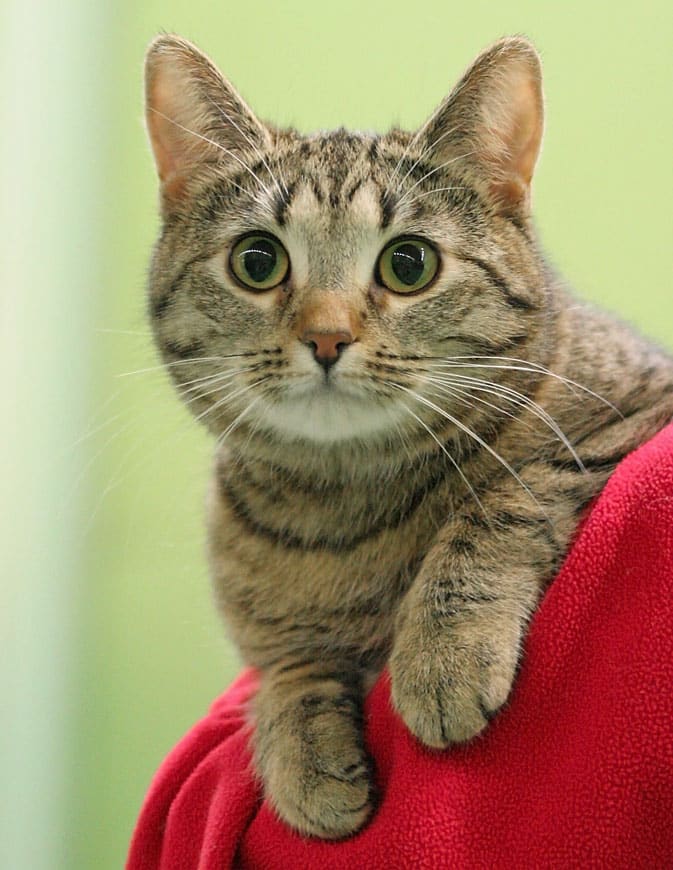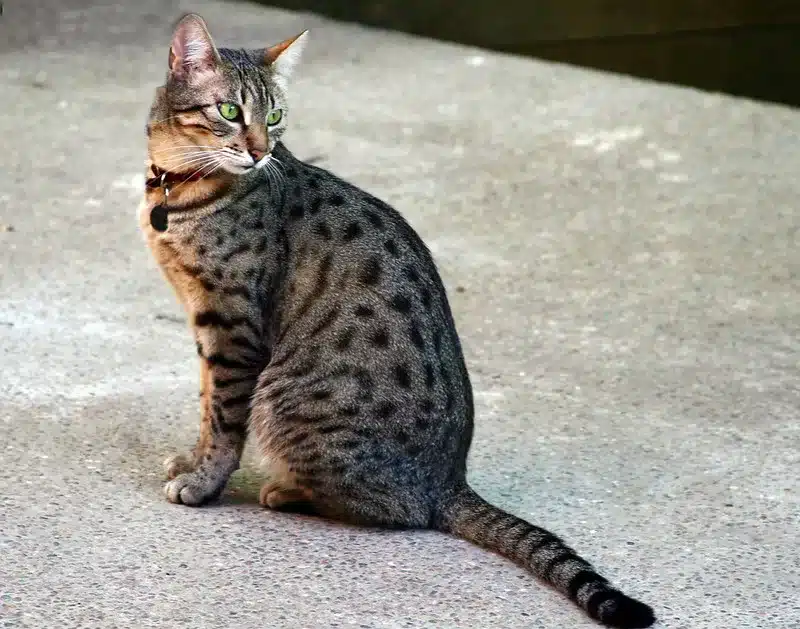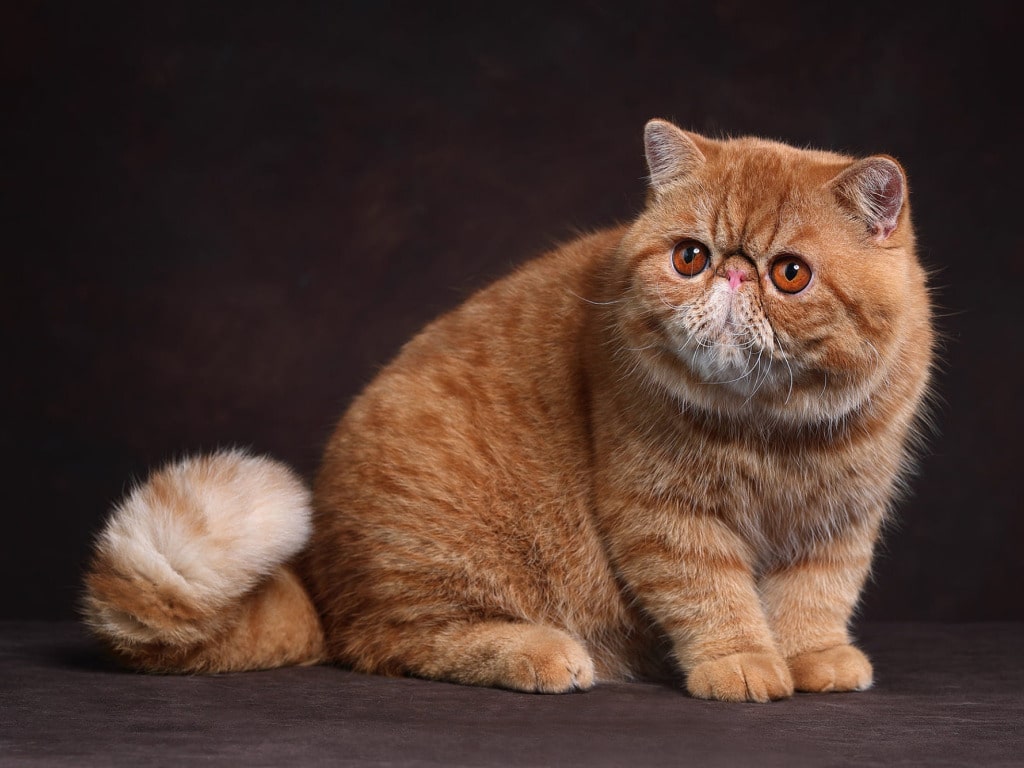
European Shorthair Cat Care and Personality | What You Need to Know If You’re Thinking of Getting a European Shorthair Cat
This post contains affiliate links. Read the full disclosure here.
- The European Shorthair cat’s origin can be traced back to the Roman Empire.
- They are medium-to-large cats with a rounded head, round eyes, and a short, glossy coat.
- They are independent yet affectionate.
- They are robust and have a lifespan of 15-20 years.
Are you a new pet owner looking to adopt your first kitty? If so, the European Shorthair cat might just be the perfect fit for you. Originating from the Roman Empire, these robust felines have a rich history as skilled mousers and beloved companions. With their distinctive physical features, balanced temperament, and minimal grooming needs, European Shorthairs offer an ideal combination of charm and practicality for cat enthusiasts of all backgrounds.
In this comprehensive guide, we’ll explore everything you need to know about caring for and living with a European Shorthair, from their fascinating history to their special care needs and ideal ownership scenarios.
Brief History
The European Shorthair cat traces its lineage back to the Roman Empire. These robust felines accompanied Roman legions across Europe, serving a vital role in pest control within military camps. As settlements flourished, these cats seamlessly transitioned to farm life, continuing their role as mousers and earning their place as Europe’s original domesticated cats.
Interestingly, the breed was known by various names over the centuries, including the Celtic Shorthair. It wasn’t until the 20th century in Sweden that the European Shorthair was formally recognized as a distinct breed. This recognition aimed to preserve the breed’s slightly wild appearance, reminiscent of its Roman ancestors, while distinguishing it from its British and American counterparts.
Moreover, the European Shorthair was often confused with the British Shorthair, which had been selectively bred to develop a more cobby body and a distinct facial structure. To address this confusion, the Fédération Internationale Féline (FIFe) officially recognized the European Shorthair as a separate breed in 1982, establishing a unique breed standard that highlighted its medium size, muscular build, and natural coat colors.
As of 2023, the European Shorthair cat breed is recognized by FIFe (Fédération Internationale Féline), LOOF (The Federation for the management of the Official Feline Origins Studbook), ACF (Australian Cat Federation), TICA (The International Cat Association) (registration only), and WCF (World Cat Federation).
Physical Features
European Shorthairs are medium to large cats, with males typically weighing 12-15 pounds and females averaging 7-10 pounds. Their bodies are well-proportioned and muscular, built for hunting and navigating their environment with agility.
Their most distinctive features lie in the head and eyes. The head is rounded with well-developed cheekbones, giving them a friendly and approachable expression. Their large, round eyes, set wide apart, come in various colors – green, amber, blue, or even a striking combination of two! These expressive eyes contribute to the European Shorthair’s intelligent and alert demeanor. In addition, they have medium-sized ears that are slightly rounded at the tips.
One of the most appealing aspects of the European Shorthair, for some cat owners, is their coat. Unlike many longhaired breeds, the European Shorthair boasts a short, dense, and glossy coat that requires minimal grooming. This single coat, lacking a thick undercoat, comes in a vast array of colors and patterns. From solid colors like black, white, and cream to classic tabbies and tortoiseshells, the European Shorthair offers a stunning variety to suit any preference.
However, these cats are not hypoallergenic. While they shed less than some longhaired breeds, they still produce allergens in their saliva and dander. If allergies are a major concern, consulting with an allergist and spending time with a European Shorthair before bringing one home is highly recommended.

Personality
European Shorthair cats are the epitome of a balanced feline temperament. They are renowned for their friendly and adaptable nature, making them excellent companions for a variety of households. These cats are not only playful and curious but also display a remarkable level of intelligence, which makes them a joy to interact with.
They are naturally curious and enjoy mental stimulation through interactive toys, puzzle feeders, and even clicker training. Their playful nature often persists well into adulthood, making them a delightful companion for families with older children.
In terms of activity, European Shorthair cats strike a perfect balance. They are moderately active, enjoying playtime and exploration, yet they are not so high-energy as to be overwhelming. This makes them suitable for families who appreciate a cat that is both engaging and capable of entertaining itself.
When it comes to independence, these felines are self-sufficient without being aloof. They cherish their alone time but also seek out affection and companionship from their owners. This blend of traits ensures that they are well-suited to busy households, as they do not demand constant attention.
They are affectionate, though. They form strong bonds with their human families and are known to be particularly loving towards their owners. In addition, their sociable tendencies extend to children, provided the children are respectful and gentle. Early socialization with them is important to ensure a positive relationship. However, due to their independent nature, they might not be the best choice for homes with rambunctious toddlers who crave constant attention.
Regarding other pets, European Shorthairs generally coexist peacefully with both cats and dogs, provided proper introductions are made. However, due to their hunting instincts, caution is advised with smaller pets such as rodents or birds.
RELATED ARTICLE: Understanding Cat Behaviors: 140 Cat Behaviors Explained

Health Issues & Lifespan
European Shorthair cats are generally healthy, with an impressive lifespan of 15-20 years. There isn’t much information on the diseases common specifically for this breed. However, ASPCA’s claims data show the following conditions to be common among these felines:
- Hyperthyroidism: This condition occurs when the thyroid gland becomes overactive, resulting in an excessive production of thyroid hormones. Common symptoms include weight loss despite an increased appetite, hyperactivity, and increased thirst and urination. It can also cause secondary health issues like hypertension and heart problems.
- Gastrointestinal Issues: These encompass a range of problems affecting the stomach and intestines, often presenting as vomiting, diarrhea, constipation, or loss of appetite. Causes can vary from dietary indiscretions to infections or inflammatory diseases.
- Diarrhea: This is the passage of loose, unformed stools. It can result from dietary changes, infections, parasites, or more serious health conditions. Persistent or severe diarrhea requires veterinary attention to determine the underlying cause.
- Vomiting: Vomiting in cats can be a sign of various conditions, from hairballs and dietary issues to systemic illnesses like kidney disease or diabetes. While occasional vomiting may not be serious, frequent or chronic vomiting necessitates a veterinary examination.
- Heart Murmurs: These are abnormal heart sounds caused by turbulent blood flow, which can be detected by a veterinarian using a stethoscope. Murmurs can range from benign to indicative of underlying heart conditions such as hypertrophic cardiomyopathy or congenital heart defects.
While European Shorthair cats are not associated with many hereditary diseases, it’s always wise to obtain cats from reputable breeders who conduct genetic testing. This proactive approach helps ensure the long-term health and happiness of these cherished feline companions.

Special Care Needs
Caring for a European Shorthair cat is a rewarding experience that doesn’t require an extensive amount of effort. Here are some tips to ensure your cat’s well-being:
Grooming
Unlike their longhaired counterparts, European Shorthair cats boast a short, dense coat that sheds minimally. A quick brush once or twice a week is sufficient to remove loose fur and promote healthy skin and coat. During shedding seasons, however, you might find yourself brushing a bit more frequently. Regular brushing not only helps control shedding but also strengthens the bond between you and your feline companion.
Exercise & Playtime
European Shorthairs may not be high-energy athletes, but they still have a playful streak and a natural hunting instinct. Providing them with opportunities to exercise and engage their minds is key to their physical and mental well-being. Interactive toys that mimic prey, scratching posts, and even climbing structures can help them channel their inner hunter and expend some energy.
15-20 minutes of daily playtime is a good starting point, but adjust the duration based on your cat’s individual needs. A bored European Shorthair might resort to destructive behavior, so keeping them entertained is important. Consider incorporating clicker training sessions – their intelligence makes them receptive to positive reinforcement training, which can be a fun bonding experience for both of you.
Provide them with interactive toys that encourage jumping and chasing, which not only keeps them fit but also mentally stimulated. In addition, these cats enjoy a variety of activities, so providing them with different types of toys and opportunities for safe, supervised outdoor exploration can greatly contribute to their well-being. It’s important to create an enriching environment that caters to their instinctual behaviors.
Affection
European Shorthair cats form strong bonds with their families and crave affection, but they might not be cuddly lap cats. They might express their affection through head bunting, gentle nudges, or following you around the house.
While they may not be constantly seeking attention, they appreciate dedicated cuddle sessions and interactive playtime. They can become overstimulated if petted too much, so pay attention to their body language and let them initiate interaction sometimes.
Special Care
European Shorthairs are generally indoor cats. Their natural hunting instincts put them at risk outdoors, where they could encounter predators, parasites, or even get injured in fights with other cats. If you do want to allow your European Shorthair some outdoor time, consider building a secure catio where they can enjoy the fresh air and sunshine in a safe environment.
Just like all cats, this breed is also prone to obesity. As such, it is important to provide them with a high-quality diet formulated for their age and activity level.
In addition, regular veterinary checkups are essential. These visits allow your veterinarian to monitor your cat’s overall health, detect any potential problems early on, and recommend appropriate preventative care measures like vaccinations and parasite control.

Fun Facts
Here are some fun facts about the European Shorthair that cat enthusiasts will appreciate:
- Believed to descend from African wildcats (Felis lybica) brought by the Romans, European Shorthair cats were not selectively bred and thrived as natural mousers on farms and around homesteads for centuries.
- Throughout history, these cats have been known by various monikers, including the Celtic Shorthair and the European Shorthaired Cat.
- This breed holds a place of honor in Finland, where it’s recognized as the country’s national cat.
- Legend has it that ship captains in Europe often kept European Shorthair cats on board to control rodent populations. These furry sailors likely played a role in spreading the breed across the continent.
- Unlike their British and American Shorthair cousins, European Shorthair cats have a rounder head, larger eyes set wider apart, and a more muscular build.
Who is the Ideal Owner of the European Shorthair Cat?
European Shorthair cats are versatile companions, suitable for a wide range of individuals and families. Here’s a snapshot of the ideal owner for this adaptable breed:
- Family-Friendly: With their adaptable and tolerant nature, European Shorthairs are perfect for families with older children and seniors. They quickly adjust to the hustle and bustle of family life.
- First-Time Owners: Their easy-going temperament makes them an excellent choice for first-time pet owners who are looking for a low-maintenance feline friend.
- Active Individuals: If you enjoy interactive play, European Shorthairs will happily engage. They thrive with owners who provide them with mental and physical stimulation.
- Apartment Dwellers: These cats can comfortably live in apartments, thanks to their moderate activity levels and ability to adapt to smaller living spaces.
- Companion Seekers: For those seeking a loyal and loving pet, European Shorthairs form deep bonds and cherish spending time with their human companions.
- Busy Professionals: If your lifestyle involves working hours away from home, rest assured, European Shorthairs can handle solitude well and will patiently await your return.
- Multi-Pet Households: They generally get along with other pets, including cats and dogs, making them a harmonious addition to a home with existing animals.
Final Thoughts
The European Shorthair cat breed stands as a testament to both ancient lineage and modern adaptability. From their humble beginnings as working cats in Roman military camps to their current status as cherished family pets, European Shorthairs have retained their distinctive characteristics and endeared themselves to cat lovers worldwide. With their friendly demeanor, moderate activity levels, and versatility in various living situations, they prove to be an excellent choice for a wide range of individuals and families.
Whether you’re a first-time pet owner seeking a low-maintenance companion or a busy professional looking for a loyal and loving pet, the European Shorthair offers a perfect blend of companionship and independence. Embracing this breed means inviting a piece of history and a bundle of joy into your home—a decision sure to bring years of happiness and fulfillment.
Frequently Asked Questions
What is a European Shorthair cat?
A European Shorthair is a breed of cat developed from the natural mouse hunters of Europe. They are essentially pedigreed versions of the common European house cat.
What are the European Shorthair cat’s characteristics?
European Shorthairs are medium-sized cats with a muscular build, short, shiny fur, and rounded features. Their coat comes in a wide variety of colors and patterns.
How big do European Shorthair cats get?
European Shorthairs are medium-sized cats. Adult males can be on the larger side, reaching 15 pounds, while females are typically between 7 and 10 pounds.
What are the European Shorthair cat’s colors?
European Shorthair cats come in a vast array of solid colors, bi-color patterns (like tuxedo), tabby patterns, and tortoiseshell.
Are European Shorthair cats hypoallergenic?
No, European Shorthairs are not hypoallergenic. While they shed less than some breeds, they still shed fur which can trigger allergies.
Are European Shorthair cats vocal?
European Shorthairs can be vocal, but they are not known for being excessive meowers. They will communicate with their owners through meows, chirps, and trills.
What is the European Shorthair cat’s personality?
European Shorthairs are known for being adaptable, friendly, and intelligent. They are playful throughout their lives and enjoy human companionship.
Are European Shorthair cats friendly?
Yes, European Shorthairs are generally friendly towards people of all ages and can get along well with other pets, like dogs and cats, if properly introduced.
Are European Shorthair cats aggressive?
European Shorthairs are not typically aggressive. However, like any cat, they can become defensive if feeling scared or threatened.
Do European Shorthair cats like water?
Most cats, including European Shorthairs, are not fond of water.
Are European Shorthair cats rare?
They are rare in the United States but relatively common in Europe. They are a recognized breed but resemble the common house cat population in Europe.
How long do European Shorthair cats live?
European Shorthair cats with proper care can live 15 to 20 years.
How much do European Shorthair cats cost?
The cost of a European Shorthair cat can vary depending on breeder reputation, location, and pedigree. You can expect to pay anywhere from $100-$500 for a kitten.
Adams, C. (2024, April 1). European Shorthair cat breed info: pictures, temperament & traits. Catster. https://www.catster.com/cat-breeds/european-shorthair-cat/
Are European Shorthair cats independent? European Shorthair cat breed. (2024). Cat Beep. https://catbeep.com/are-european-shorthair-cats-independent/
Beberman, B. (2023, November 23). Cat digestive problems: Symptoms, diagnosis, and treatment. BondVet. https://bondvet.com/b/cat-digestive-problems
Cosgrove, N. (2024, January 25). European Shorthair cat: info, traits & pictures. PetKeen. https://petkeen.com/cat-breeds/european-shorthair-cat/
Defarges, A., Blois, S. & Hall, E. j. (2018, August). Disorders of the stomach and intestines in cats. MSD Manual Veterinary Manual. Pet Owner Version. https://www.msdvetmanual.com/cat-owners/digestive-disorders-of-cats/disorders-of-the-stomach-and-intestines-in-cats
European Shorthair. (2023). World Cat Congress. https://www.worldcatcongress.org/wp/cat_breed_comp_eush.php
European Shorthair. (2024). Basepaws. https://basepaws.com/cat-breeds/european-shorthair
European Shorthair breed overview, facts and information – exploring the European Shorthair breed. (2024). Cat Beep. https://catbeep.com/european-shorthair/
European Shorthair cat. (2024). Hill’s. https://www.hillspet.com/cat-care/cat-breeds/european-shorthair
European Shorthair cat: A comprehensive guide on care, training techniques, and essential tips on this exceptional cat breed for new owners. (n.d.). MyBritishShorthair.com. https://mybritishshorthair.com/european-shorthair-cat/
European Shorthair cat and 15 pets – are European Shorthair friendly with other pets. (2024). MyBritishShorthair.com. https://mybritishshorthair.com/european-shorthair-and-other-pets/
European Shorthair cat: characteristics, personality, and breed information. (2024). Cats.com. https://cats.com/cat-breeds/european-shorthair
Fédération Internationale Féline (FIFe). (1 January 2023). European breed standards FIFe. Wayback Machine. https://web.archive.org/web/20230522135448/http:/www1.fifeweb.org/dnld/std/EUR.pdf
Hyperthyroidism in cats. (2017). Cornell Feline Health Center. https://www.vet.cornell.edu/departments-centers-and-institutes/cornell-feline-health-center/health-information/feline-health-topics/hyperthyroidism-cats
Mark. (2024, January). Unveiling the European Shorthair life expectancy: a guide. All About Cats. https://www.catcornerblog.com/european-shorthair-life-expectancy/
Maurer, T. (2024, January 12). European Shorthair cat breed profile: care, traits, facts & more. Love Your Cat. https://www.loveyourcat.com/european-shorthair/
Ndlebe, S. (2023, October 10). Exploring the European Shorthair cat breed: a perfect blend of elegance and affection. Cat Buzz. https://catbuzz.org/cat-breeds/european-shorthair/
Racine, E. (2023, December 7). Cat vomiting: 7 causes and how to help. Covetrus Great Pet Care. https://www.greatpetcare.com/cat-health/cat-vomiting/
Wedderburn, P. (2020, September 2). Heart murmurs in cats: symptoms, treatment, & life expectancy. Cats.com. https://cats.com/heart-murmurs-in-cats
Williams, K. & Ward, E. (2023). Vomiting in cats. VCA Animal Hospitals. https://vcahospitals.com/know-your-pet/vomiting-in-cats
Turner, B. (2023, August 21). Your cat has diarrhea: what to do and not do. Preventive Vet. https://www.preventivevet.com/cats/your-cat-has-diarrhea-what-to-do

Reina Marie Gonzales is the Founder of Sharp Minds Content LLC. She’s also an entrepreneur and a writer with over 20 years of experience. Cat mom to the sweetest and most adorable Persian kitty, her other passions include personal development, self-love, spirituality, and self-empowerment. She considers herself a lifelong learner and always sees the glass half full.


